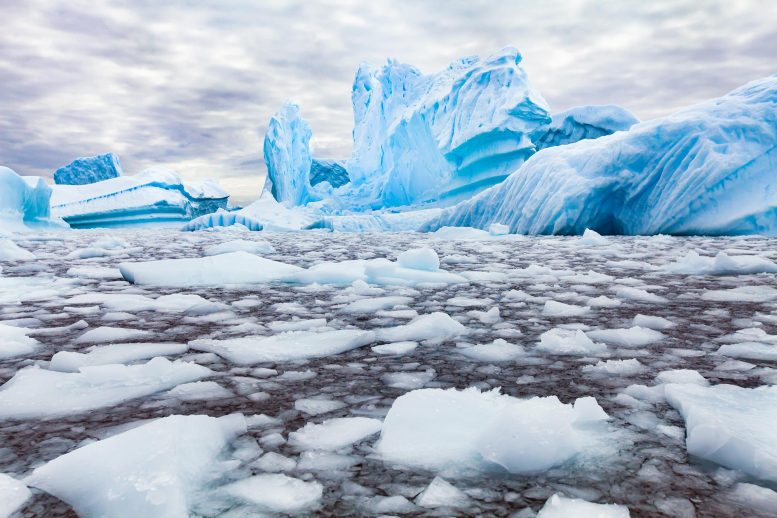Surprising Melting: East Antarctica Faces Impending Crisis, Stanford Researchers Reveal

Scientists from Stanford have discovered that the East Antarctic Wilkes Subglacial Basin, which contains enough ice to increase global sea levels over 10 feet, is nearing a critical threshold for unpreventable melting. This disputes prior claims about its stability. The researchers have developed a novel method for examining radar data and discovered areas on the verge of melting, hinting at potential glacial retreat and a significant, under recognized contribution to rising sea levels.
In a climate undergoing changes, Antarctica's increasing meltwater is expected to contribute significantly to rising sea levels. Yet, most research studies have primarily focused on West Antarctica, particularly places like the Thwaites Glacier where significant melting has been witnessed in recent years.
In a paper recently featured in Geophysical Research Letters, Stanford researchers have revealed that the Wilkes Subglacial Basin in East Antarctica, which contains enough ice to raise global sea levels by more than 10 feet, might be closer to erratic melting than previously assumed.
“The analysis in this region has been minimal – there's a massive ice volume there, but it's been relatively stable,” stated Eliza Dawson, a PhD geophysics student at Stanford and the paper's first author. “For the first time, we're examining the temperature at the base of the ice sheet and its proximity to potential melting.”
About the size of California, the Wilkes Subglacial Basin discharges into the Southern Ocean via a relatively small coastal area. Dawson and her team found indications that the sheet of ice at the base is on the brink of thawing. This suggests that even minor changes in temperature might significantly impact this coastal region, which prevents the ice within the entire Wilkes Subglacial Basin from melting.
Past studies have shown that the Wilkes Subglacial Basin could be especially prone to irreversible melting because the ground under it is beneath sea level and sloping away from the ocean. For the first time, Dawson and her team have analyzed how the present temperature at the base of the ice sheet might increase this susceptibility.
The investigators leveraged data from existing radar surveys conducted by aircraft flying over the glacier. These planes recorded the reflections of electromagnetic signals that passed through the ice sheet and bounced from the ground beneath. A new approach to interpreting this data was developed by the team, which allowed them to convert images of the ice and bedrock into information about the temperature at the base of the ice sheet.
According to Dustin Schroeder, associate professor of geophysics and electrical engineering, "the ice's temperature influences the radar's reflection in multiple ways, resulting in ambiguous single measurements. We used a statistical approach that compared regions that were presumed versus thawed and compared their radar signatures. This let us categorize other areas of the ice sheet as definitively frozen, absolutely thawing or unclear."
While the region consists of large segments of frozen and melted ground, most areas couldn’t conclusively be identified as one or the other. This could be due to changes in the ice sheet's structure or complications in the data, but it could also suggest that ground below the ice is either on the cusp of thawing or a mix of frozen and thawed areas. If the latter is accurate, a minor increase in temperature at the base of the ice sheet could lead the glaciers in the Wilkes Subglacial Basin towards a tipping point.
“This suggests that glacial retreat could happen in the future,” said Dawson. “This part of East Antarctica has been largely overlooked, but we need to understand how it could become more unstable. What would have to occur to witness mass loss?”
Diverse models have forecasted drastically different outcomes for the Wilkes Subglacial Basin and its impact on rising sea levels, but there’s scarce data about the region. The scientists plan to incorporate their radar-based temperature observations into an ice sheet model to enhance predictions about how the region will develop under various climate scenarios.
Through their research, they hope to underscore the importance of investigating areas of East Antarctica, like their focus region, which have appeared stable but could greatly influence our future.
According to Schroeder, “This area has conditions that we could envision changing. If warm ocean water reaches it, it's going to ‘activate’ a part of Antarctica that’s typically overlooked as a potential contributor to sea level rise.”
This work was funded by the National Science Foundation, the National Aeronautics and Space Administration, and the European Union.




